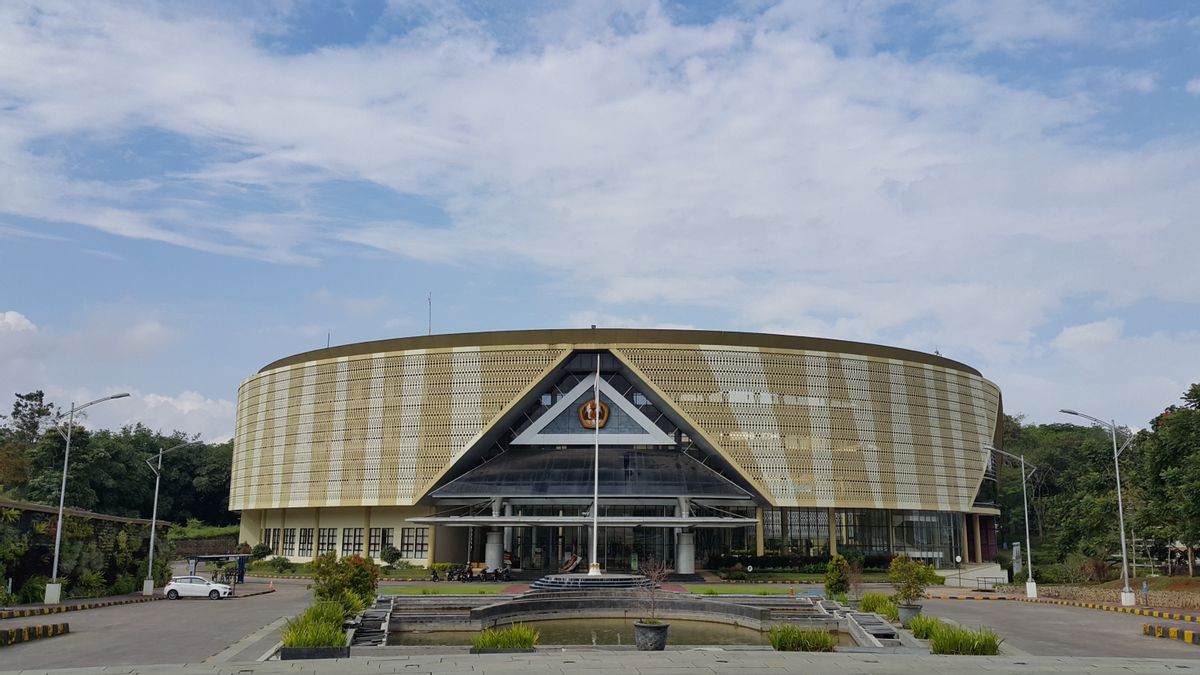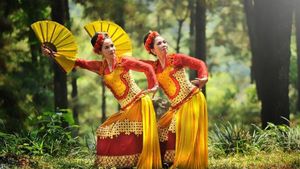JAKARTA - Padjadjaran University (Unpad) is very thick with elements of Sundanese culture. Naturally, because this campus was established in Bandung, West Java and on the aspirations of the people of West Java. But the question is, where does the Sundanese element lie besides the name of the university itself?
Let's start with the history first. In the 1950s, there were already several universities in Bandung such as the Faculty of Engineering and the Faculty of Mathematics and Natural Sciences which were part of the University of Indonesia (UI) and the Higher Education Teacher Training College (PTPG). However, the community wants a state university that provides interdisciplinary education.
In addition, the government at that time felt the need for a state university in Bandung, especially after the 1955 Asian-African Conference was held there. Therefore, as reported by the Unpad website on October 14, 1956, a State University Formation Committee (PPUN) was formed in Bandung. Then on December 3, 1956, the committee formed a delegation consisting of prof. Muh. Yamin, Mr. Soenardi, Mr. Bushar Muhammad, and several other West Java community leaders.
Their task is to convey the aspirations of the people of West Java regarding the establishment of a state university in Bandung to the Government, the Regency and City of Bandung DPR, the Governor of West Java, the President of the UI, the Chairman of the Parliament, the Minister of PPK, even the President of the Republic of Indonesia. In short, on September 11, 1957, Padjadjaran University (Unpad) was born.
The name "Padjadjaran" was taken from the name of the Sundanese Kingdom, namely the Padjadjaran Kingdom led by King Siliwangi or King Dewantaprana Sri Baduga Maharaja in Pakuan Padjadjaran (1473-1513 AD). This name is the most famous name and is remembered by the people of West Java, because of the fame of his figure among the kings in the Sundanese Tatars at that time.
Meaning of SymbolApart from the name, which is clearly taken from the Sunda Kingdom, its elements are also embedded in the Unpad symbol. Namely a symbol of the Sundanese heirloom, cleaver.
Once upon a time, this heirloom was a symbol of the glory of a Pajajaran Kingdom. Meanwhile, the cleaver in the symbol of Padjadjaran University means strength and courage to protect rights and truth.
Apart from the cleaver, there are five other parts of the Padjajaran University emblem. Among them are torches, wings or leaves, wheels, lotus flowers, and pentagons.
The torch symbolizes knowledge which becomes the light of life that brings nobility. Then the wings or leaves are an allusion to Pakuan City which contains the word "nail" which is the great center of Padjadjaran Keprabuan. Meanwhile, paku leaves are wings which mean they always try to reach a higher level or quality.
Meanwhile, the meaning of wheel is social. The wheel, which is always moving around, symbolizes the dynamic process of Unpad.
Then the lotus flower which when in bloom can mean eternal glory, sacred for all time, a symbol of culture and education. Finally, the pentagon in the shape of a pentagon symbolizes Pancasila.

Sundanese elements are also manifested both physically from the campus and through tradition. As explained by Eny Ratnasari et al in "Organizational Culture of Universitas Padjajaran" (2019), it emphasizes how thick Sundanese nuances are on this campus.
In Unpad building styles, for example, many are made with concepts that elevate local wisdom in modern architecture. The concept is more essential and egalitarian in accordance with the nature of the Sundanese.
In addition, the Sundanese element is also felt from tradition. Call it one of the traditions of the anniversary celebration entitled "Unpad Grateful". These events include blood donations and blood tests, congregational maghrib prayer, meditation and musical contemplation.
Then in every formal event held at Unpad, they always sing the National Anthem of Indonesia Raya, Hymne Unpad. In addition, Karatagan Padjadjaran is always heard. "Unpad once held a ceremony using Sundanese at the awarding ceremony of the Honoris Causa title," wrote Eny et al (2019).
Finally, what is certain is that there is a passion for cultural arts. For example, the Rumawat Padjadjaran Cultural Art which was deliberately created to preserve Sundanese arts such as poetry performances, fairy tales, theater, music, monologues, carita pondok, mini fiction to satire.
The English, Chinese, Japanese, Arabic, and French versions are automatically generated by the AI. So there may still be inaccuracies in translating, please always see Indonesian as our main language. (system supported by DigitalSiber.id)










